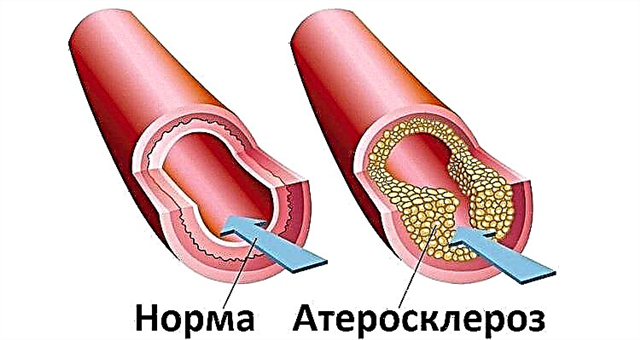Tympanoplasty of the ear is a radical operation, which consists in restoring the normal position of the ossicles, sanitizing the tympanic cavity and eliminating the holes in the ear membrane. Complex health intervention helps to eliminate disturbances in the chain of sound-conducting structures and to regenerate the mucous membranes in the middle ear. This leads to the restoration of hearing acuity and regression of the inflammatory processes that occur during the development of ear pathologies.
Surgical treatment is effective in the treatment of chronic and purulent otitis media, characterized by the accumulation of exudate in the middle ear and the development of functional hearing loss. Compliance with certain rules during rehabilitation plays a key role in achieving the therapeutic results. Compliance with medical recommendations guarantees the absence of side effects and severe postoperative complications that affect the functioning of the auditory analyzer.
About the operation

Tympanoplasty - what is it? Tympanoplasty is a hearing-improving operation, the purpose of which is to restore the normal conduction of the ossicles. With the development of chronic catarrhal processes, the operation is carried out in two stages. First, a specialist will sanitize the tympanic cavity, in which fluid accumulates. At the second stage, the otosurgeon restores the correct position of the auditory ossicles (ossiculoplasty), thereby sharpening the hearing.
Surgical treatment of functional hearing loss is often carried out by the intrameatal method, i.e. the middle ear cavity is accessed through an incision in the ear membrane. After completing all the necessary manipulations, the specialist finishes the operation with myringoplasty. Achieving the tightness of the ear membrane prevents re-infection of the middle ear and degenerative tissue changes.
Important! After the operation, moisture should not be allowed to enter the outer ear, as this can lead to the development of myringitis and the formation of perforated holes in the membrane.
Indications for surgery
Surgical intervention is advisable only with functional damage to the hearing system, which is characterized by the development of hearing loss and sluggish inflammation in the tissues of the hearing organ. Dysfunction of the auditory analyzer occurs mainly when the main parts of the middle ear are affected. It is advisable to carry out the operation in the following cases:
- purulent otitis media;
- adhesive otitis media;
 tympanosclerosis;
tympanosclerosis;- perforation of the membrane;
- hearing loss;
- epitympanitis;
- cholesteatoma;
- mesotympanitis.
The operation will be effective in treating functional hearing loss only. To eliminate sensorineural hearing loss, completely different methods of therapy are used.
Untimely elimination of catarrhal processes in the middle ear leads to a limitation of the mobility of the auditory ossicles, the formation of adhesions and mineralization. As a result, disturbances in the conduct of sound signals are observed, which leads to a decrease in hearing acuity and the development of functional hearing loss. Sanitizing surgery with myringoplasty helps to eliminate liquid exudate from the ear cavity, which accelerates the regeneration of soft and bone tissues.
Contraindications
Despite the fact that radical ear surgery is indicated for the development of purulent and exudative otitis media, it should be abandoned during the period of exacerbation of inflammatory processes. In addition, experts do not recommend resorting to surgical treatment in the presence of the following contraindications:
- sensorineural hearing loss;
- mental illness;
- chronic inflammation;
- intracranial injury;
- septicopyemic complications;
- labyrinthitis;
- blood poisoning.
Hearing-improving operations will be ineffective in the treatment of functional hearing loss in chronic rhinitis. Due to inflammation in the nasopharynx, the patency of the Eustachian tube will be minimal, which will inevitably lead to the accumulation of serous effusions in the ear and hearing loss.
Features of tympanoplasty
In medical practice, there are several ways to perform tympanoplasty. The choice of technique depends on the type of ear disease and the degree of disturbances in the chain of sound-conducting structures. Specialists refer to the main types of operations:
- mastoidectomy - the elimination of purulent masses and granulations in the bone tissue of the mastoid process;
- myringoplasty - an operation to remove perforated holes in the ear membrane;
- ossiculoplasty is a surgical intervention aimed at restoring sound transmission by the auditory ossicles.
A separate group is divided into sanitizing operations, the purpose of which is to remove exudate from the middle ear, cholesteatoma and other benign neoplasms. In case of damage to the elements of the sound-conducting system, specialists carry out prosthetics of the anvil process, which helps to restore the functions of the auditory analyzer.
If it is necessary to replace the ossicles or their elements, access to the middle ear is obtained through an incision that is made in the behind-the-ear region. From there, the otosurgeon can remove tissue to remove large perforations in the ear membrane. During patchwork restoration of the integrity of the membrane, a special mesh is installed, which prevents the displacement of the graft in the process of tissue healing.
To reduce the risk of postoperative complications, it is forbidden to fly, actively play sports, lift weights and listen to music with headphones for 2-3 months.
If the recommendations are not followed in the postoperative period, complications may occur. In particular, discharge from the ear after tympanoplasty indicates the continuation of the inflammatory process in the mucous membranes or tissues of the mastoid process. In most cases, this happens due to hit water in the ear. In case of a relapse of the disease, it is necessary to seek help from an otolaryngologist, who will be able to accurately determine further treatment tactics, depending on the identified violations.
water in the ear. In case of a relapse of the disease, it is necessary to seek help from an otolaryngologist, who will be able to accurately determine further treatment tactics, depending on the identified violations.
The effectiveness of tympanoplasty
Determination of the effectiveness of tympanoplastic operations makes it possible to assess the correctness of the diagnosis and surgical treatment. The key criteria for determining the effectiveness of hearing-enhancing operations are:
- anatomical and morphological outcome of treatment - assessment of the rate of regression of inflammatory reactions and regeneration of affected tissues;
- functional outcome - determination of the increase in hearing in the postoperative period.
During an audiological examination, the hearing specialist determines the degree of hearing improvement in comparison with the baseline level. In parallel, the audiologist assesses the level of perception of live speech. Consistency of results is one of the key criteria for determining the degree of improvement in hearing function. If the necessary surgical procedures are successfully carried out, the data on the degree of hearing improvement should not change for several months.

 tympanosclerosis;
tympanosclerosis;

